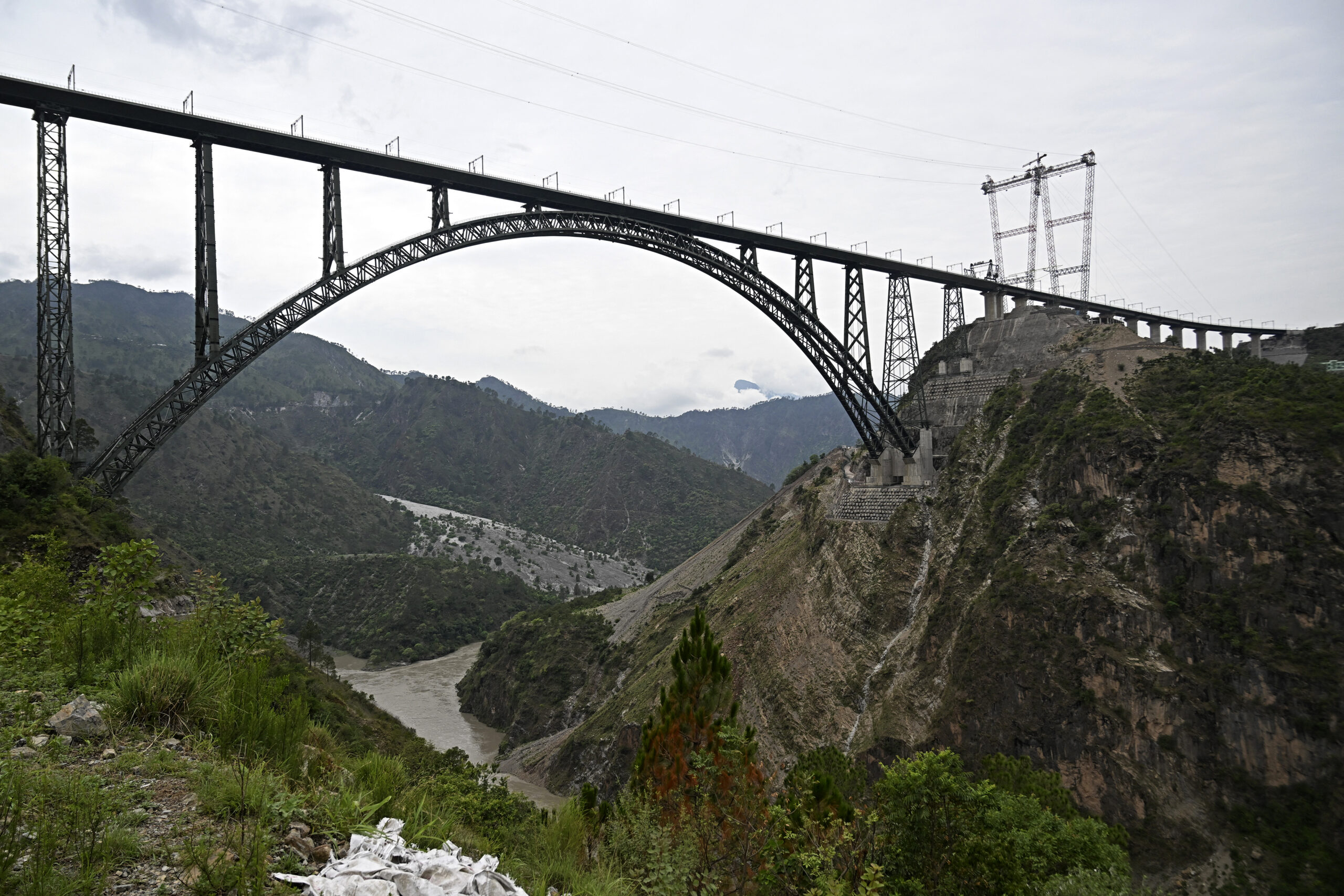
High in the Himalayas, where winds slice through conflict-hit Kashmir at 160 mph and temperatures swing from -20°F to 113°F, India has unveiled the world’s highest rail bridge, remaking the power map of Asia.
Why It Matters
Prime Minister Narendra Modi‘s inauguration of the Chenab Rail Bridge, a 1,178-foot-tall steel construction that is nearly 100 feet taller than the Eiffel Tower, finally connects the Kashmir Valley to other railways in the world’s most populous country.
It underlines India’s hold on Kashmir just weeks after an insurgent attack on tourists in Pahalgam killed 26 people and prompted the biggest confrontation in decades with Pakistan, which India blamed for the attack despite its denials.
The railway also strengthens India’s transport links to the disputed region where it is also at odds with China, which has strong links to Pakistan. All three countries are nuclear powers.
What To Know
The bridge completes the 200 mile Udhampur-Srinagar-Baramulla Rail Link (USBRL).
“With the blessings of Mata Vaishno Devi, the Valley of Kashmir is now connected to India’s vast railway network,” declared PM Modi at the ceremony which was live-casted on X. “We have always invoked Maa Bharati (Mother India) with deep reverence, saying ‘from Kashmir to Kanyakumari’ – today, this has become a reality even in our railway network.”
Photo by TAUSEEF MUSTAFA / AFP
The bridge is built with 28,000 tonnes of steel and 66,000 cubic meters of concrete to withstand earthquakes and blizzards, completing a railway that had proven beyond the reach of the British colonizers who established much of India’s rail network.
“Many people dreamt of this train service. What the British couldn’t do, you made a reality. Now, the Kashmir Valley is finally connected to the rest of India by rail,” posted Jammu and Kashmir Chief Minister Omar Abdullah on X.
The Tricolour flies high over the Chenab Rail Bridge!
It’s a feeling of immense pride that this bridge seamlessly blends ambition with execution, reflecting India’s growing capability to build futuristic infrastructure in the most challenging terrains. pic.twitter.com/PrqELwfO7k
— Narendra Modi (@narendramodi) June 6, 2025
The bridge and railway have major geostrategic implications, linking Indian-controlled Kashmir, whose ownership is contested by Pakistan, with other parts of India.
It slashes military deployment time to the Pakistan border from days to hours. Tension remains high between the two nuclear-armed neighbors following the Pahalgam attack.
The railway also strengthens the economic links. Kashmir’s ski slopes, apple orchards, and tech hubs are now accessible year-round. Modi’s government calls the region “India’s crown jewel.”
While India also has a border dispute with China in Kashmir, the bigger message of the new railway may be India’s growing ability to carry out major infrastructure projects – showing China that it is not alone in this.
As China builds the $60B China-Pakistan Economic Corridor, it is also a demonstration of Indian sovereignty in the Himalayas, where India’s challenge to China also serves U.S. strategic interests.
What People Are Saying
Jammu and Kashmir Lieutenant Governor Manoj Sinha on his X post called June 6, 2025, a “momentous day” that would “go down in history,” noting the simultaneous inauguration of India’s first cable-stayed rail bridge at Anji.
Railway Minister Ashwini Vaishnaw hailed it as “a historic day,” attributing the achievement to Prime Minister Modi’s “steely determination,” in his statement.
What Happens Next
India can be expected to continue to reinforce its economic, political and strategic links to Kashmir. While the latest round of conflict with Pakistan has died down since the ceasefire, there is every possibility that further confrontation could be triggered.
